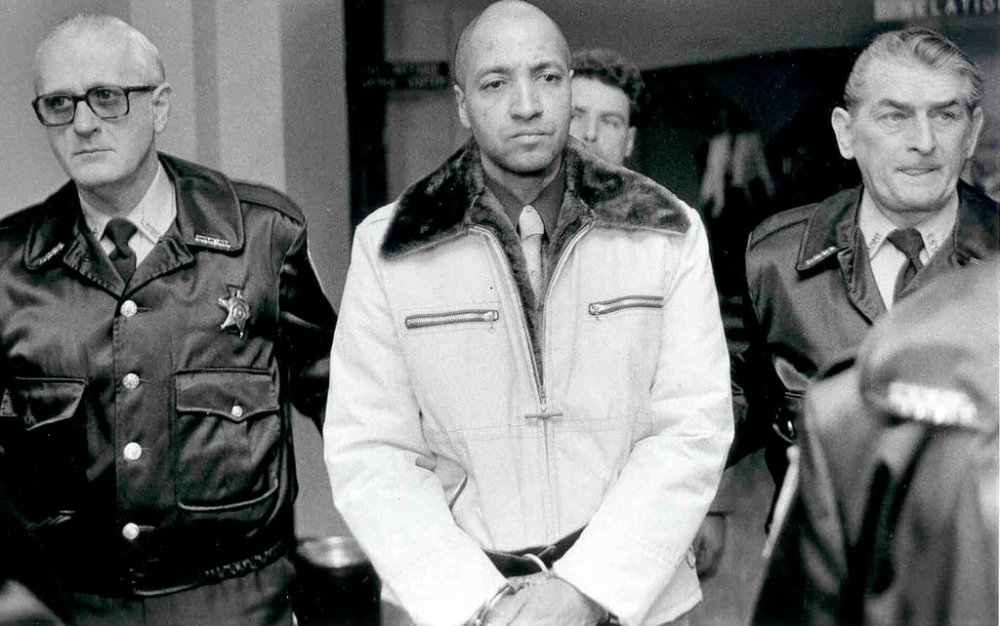Mass murderer George Banks, spared from death penalty, dies in prison 43 years after rampage
Advertisement
Read this article for free:
or
Already have an account? Log in here »
To continue reading, please subscribe:
Monthly Digital Subscription
$0 for the first 4 weeks*
- Enjoy unlimited reading on winnipegfreepress.com
- Read the E-Edition, our digital replica newspaper
- Access News Break, our award-winning app
- Play interactive puzzles
*No charge for 4 weeks then price increases to the regular rate of $19.00 plus GST every four weeks. Offer available to new and qualified returning subscribers only. Cancel any time.
Monthly Digital Subscription
$4.75/week*
- Enjoy unlimited reading on winnipegfreepress.com
- Read the E-Edition, our digital replica newspaper
- Access News Break, our award-winning app
- Play interactive puzzles
*Billed as $19 plus GST every four weeks. Cancel any time.
To continue reading, please subscribe:
Add Free Press access to your Brandon Sun subscription for only an additional
$1 for the first 4 weeks*
*Your next subscription payment will increase by $1.00 and you will be charged $16.99 plus GST for four weeks. After four weeks, your payment will increase to $23.99 plus GST every four weeks.
Read unlimited articles for free today:
or
Already have an account? Log in here »
HARRISBURG, Pa. (AP) — George Banks, one of the most notorious mass murderers in the U.S., has died.
Banks, 83, died Sunday afternoon at Phoenix state prison in Pennsylvania, the state Department of Corrections said. Banks died of complications from renal neoplasm, or kidney cancer, said Montgomery County Coroner Dr. Janine Darby.
Banks had been in prison since 1982 after shooting 14 people, and killing 13, including his own children, during a rampage in Wilkes-Barre. At time, it was considered one of the worst mass murders in American history. He was convicted of 12 counts of first-degree murder and one count of third-degree murder.

Banks had been drinking at a party late at night before using an AR-15 rifle to start the rampage at his home.
Five victims were his children, ages 1 to 6. Four more were the mothers of his children. Other victims were bystanders, including an 11-year-old child who sometimes stayed with his family, a 7-year-old child and a teenager who saw Banks leaving his home armed with the rifle and recognized him.
Banks killed three women and five children at his home, authorities say. Then, dressed in green army fatigues with an ammunition bandolier around his chest and shoulders, Banks left, when he saw four teenagers walking to their car from a nearby friend’s house. He shot one fatally, and another, who survived, authorities say.
He stole a car and went to the Heather Highlands Trailer Park where police found the bodies of Banks’ son and the child’s mother, as well as her mother and her nephew.
From there, Banks went to his mother’s house, who told police that Banks told her, “I killed them. I killed them all,” court records say.
Banks eventually surrendered after a four-hour standoff at a friend’s house after police tried to convince him that his victims had survived.
Eventually, state courts prevented his execution, saying he wasn’t mentally competent. That left Banks with a sentence of life imprisonment.
The teenager who survived being shot by Banks, Jim Olson, later expressed frustration in 2012 that Banks hadn’t been executed, saying, “What is the sense of having a death penalty if you don’t use it or enforce it?″
Defense lawyers had argued that Banks was insane when he went on the shooting spree.
After his arrest, Banks, who was biracial, claimed he had killed his children to save them from the pain of growing up in a racist society. During his trial, he overruled his lawyer on strategic decisions, and argued instead that prosecutors, the judge and the mayor of Wilkes-Barre were conspiring against him.
Banks also showed the jury gory pictures of his victims, even after his lawyer had successfully gotten the photos barred on the grounds that they were gruesome and prejudicial.

